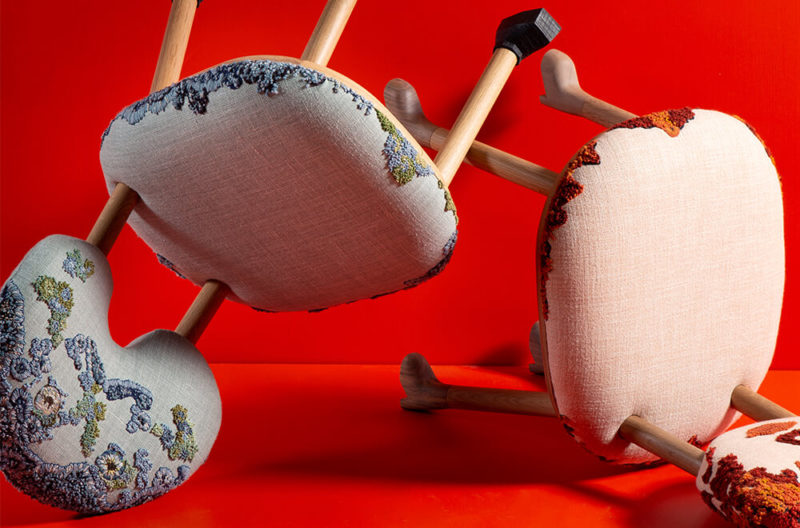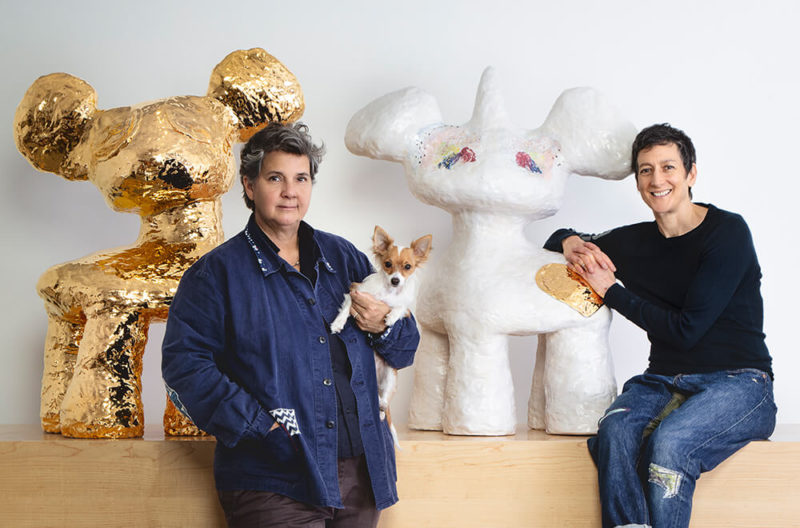In The Hot Seat / Zesty Meyers and Evan Snyderman
R & Company have been championing contemporary collectible design for over twenty years – it all started in the flea markets of Philadephia and Manhattan.
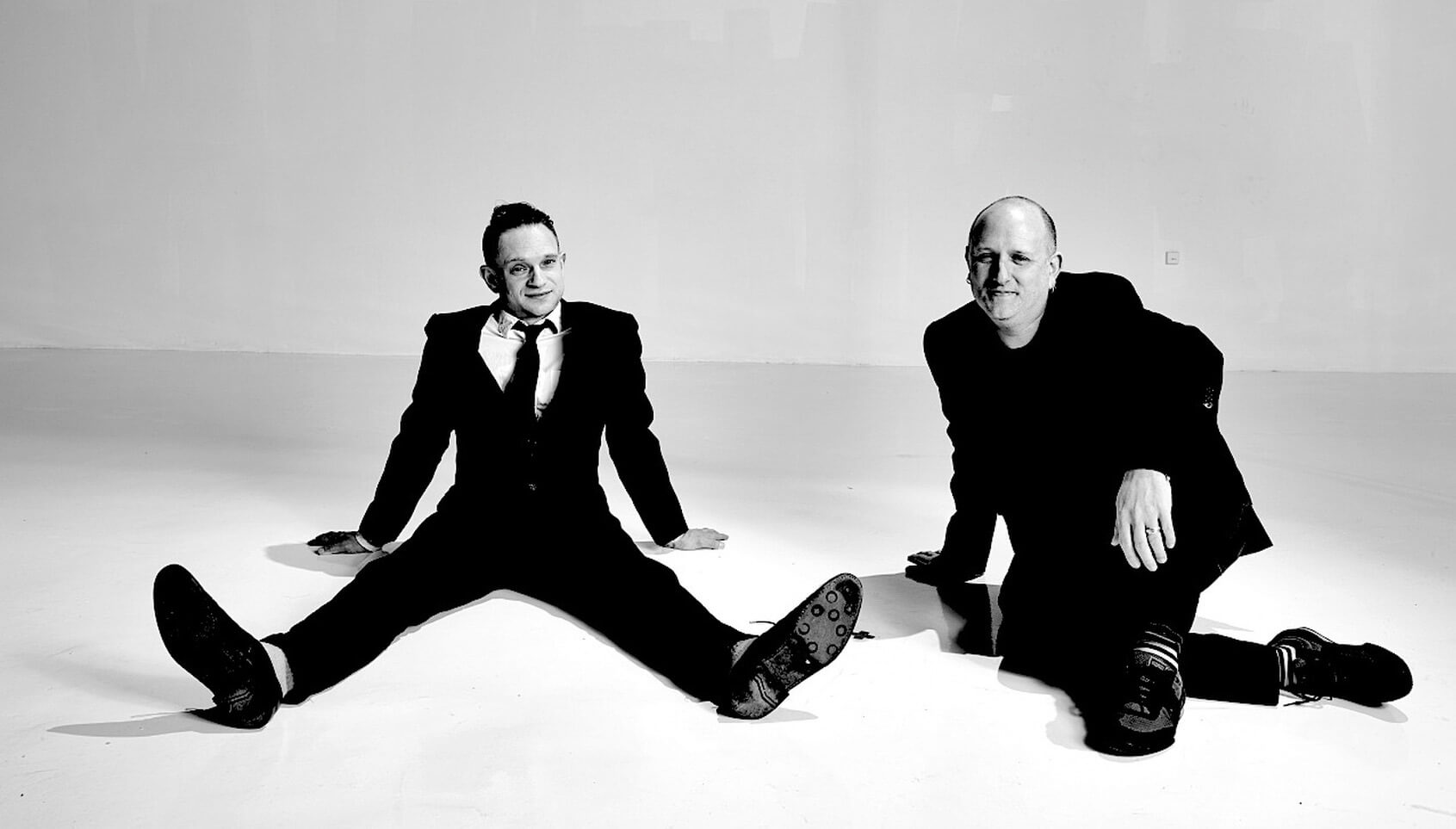
Evan Snyderman and Zesty Meyers
COURTESY: R & Company
THE DESIGN EDIT sat down with Zesty Meyers and Evan Snyderman, founders and principals of R & Company. But their story goes back well before the gallery opened.
What were you doing before?
Evan: My parents were dealers, so I grew up collecting things like matchbox cars from when I was around eight years old. After graduating from college, I lived and worked in a huge loft in Philadelphia, making sculpture out of found objects I’d collected. Moving to New York, I had to sell things, so I got together with a friend and did the local flea market.
Zesty: I grew up in Providence, around midcentury design without knowing it. But I’d started my first business when I was in high school, selling jewellery findings.
Evan: I didn’t know anything about design, but I grew up dealing with artists. I’d play in my parents’ gallery and pretend I was selling things to customers.
Zesty: We had met as RIT undergraduates, and we were both glassblowers. I’d started the ‘B team’, a group that did performance art in glassblowing, and so we were both doing that, making art and teaching at Urban Glass.
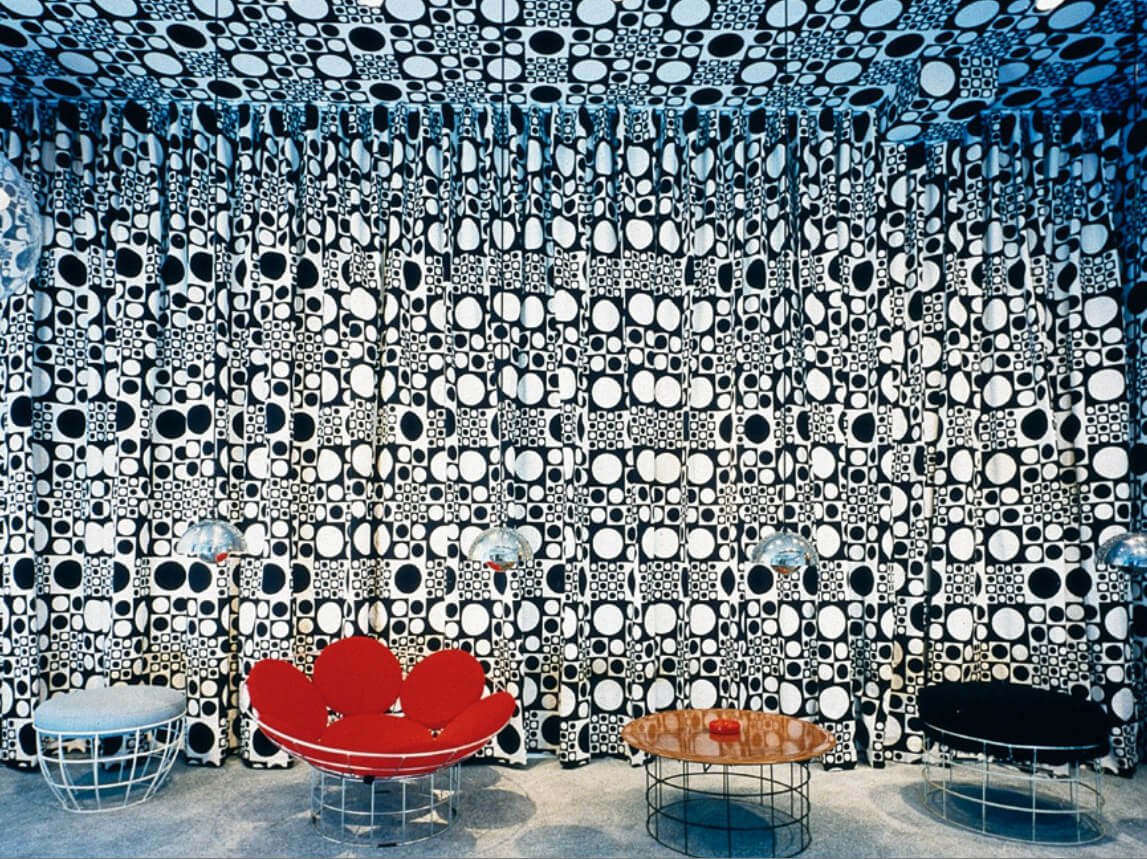
Installation view, ‘Verner Panton’ exhibition, 2001
COURTESY: R & Company
What were you looking for at the start?
Zesty: It was natural for us to start selling things together, we just expected to have fun … it was a hobby.
Evan: But within a couple of weeks we knew there could be a business in it. I would go to Philadelphia and Zesty to Providence and we each took $100. We would buy things and bring them back to sell at the Philadelphia flea market. I remember finding a George Nelson clock for $5 and a dealer across the street saw it looking out his window, came and bought it for $100, then asked us if we wanted to sell a table by someone named Paul McCobb – we said “Sure!” It showed us that we had a good idea. Then we started selling in Manhattan at the big outdoor flea market on 26th Street.
Zesty: We’d set up the space like a display, and it started to attract people.
Evan: The pickers would swarm us because they thought we had taste … everybody else just put their stuff on tables.
Zesty: We met all the dealers, the buyers, museum people, collectors — all the people who are still important in the business went there.
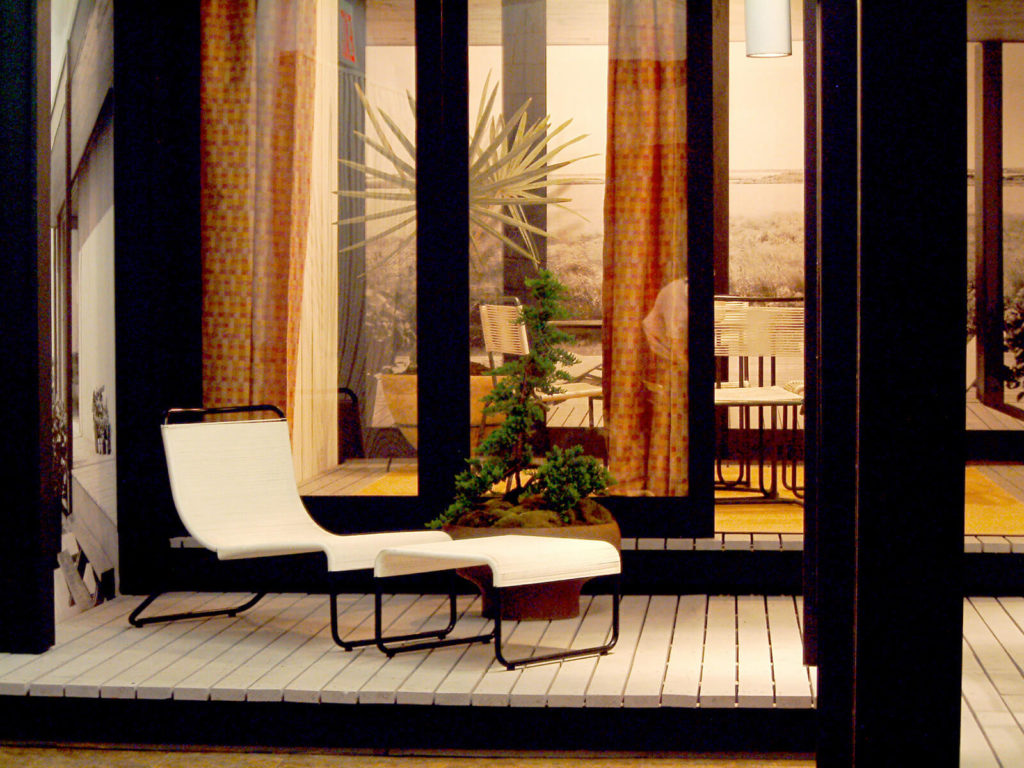
Installation view, ‘Outside’ curated by Steven Learner, 2002
COURTESY: R & Company
How did you find things to sell?
Evan: On Thursday evenings we’d go to Hotaling’s, a big newspaper dealer, buy all the papers from every area around the city, and go through every one of the classified ads to mark those that mentioned midcentury or 1950s, or something like that. Then we’d each drive to another location — or if it looked like a great sale we’d go together. We’d often camp out overnight in the car, and the neighbours would sometimes call the police to find out why we were hanging out in a nice neighbourhood at 2 am. You’d have to be first in line because the estate sales would let in only ten people at a time. We got really good at it … we’d beat all the other dealers.
Zesty: It got really tiring. We’d go back after buying things, and sell them at the market on Sunday without almost any sleep on the weekend. And we were still working as glassblowers.
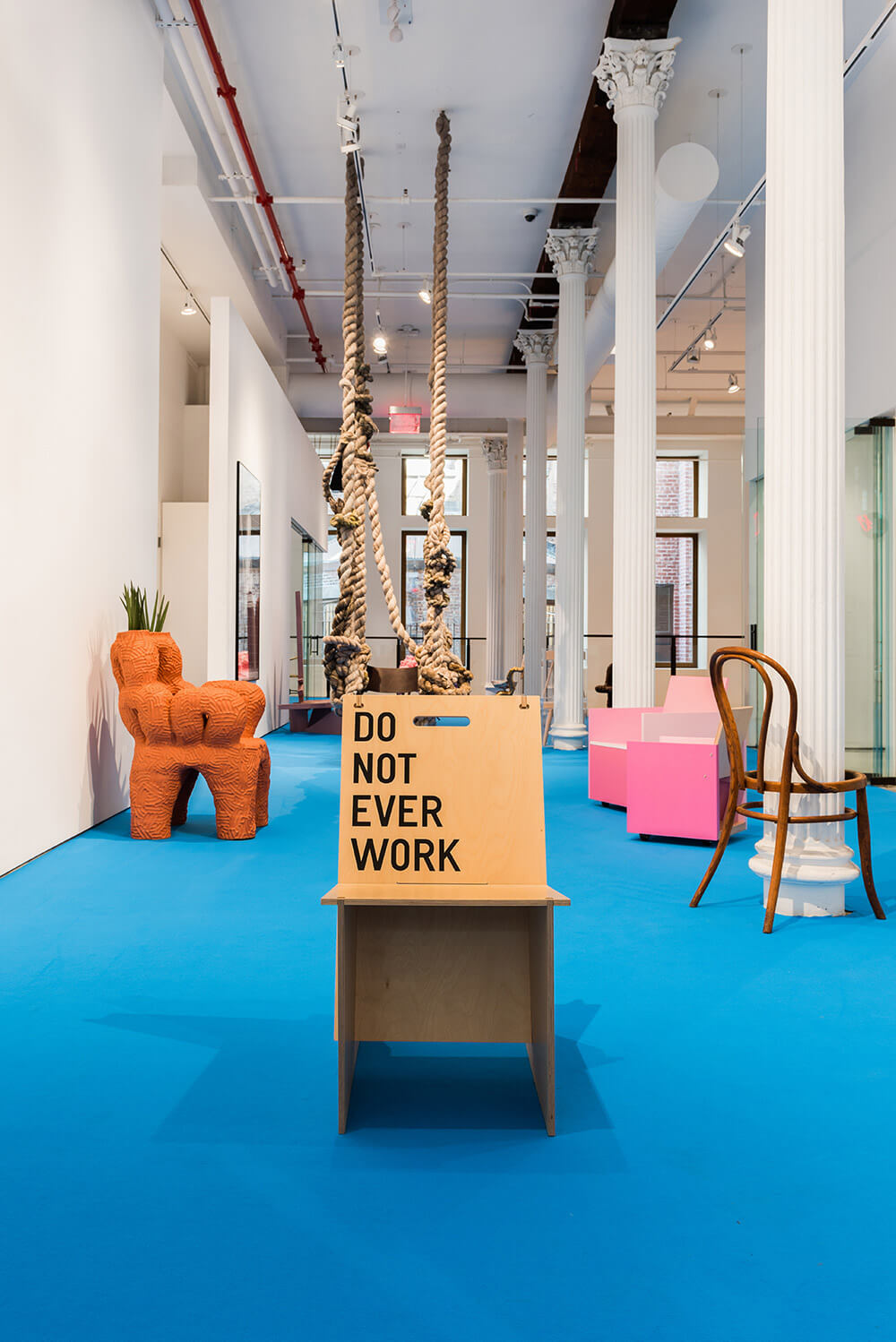
Installation view, ‘Chairs Beyond Right and Wrong’, 2019
COURTESY: R & Company
What was most memorable about those days?
Zesty: One tag sale ad mentioned an Eames screen in the original box, so we rushed up and were first in line. I asked the lady the price and she said $3,000. When I hesitated, a dealer behind me said “I’ll take it”, but the lady gave me first choice, and I said yes. We didn’t even have the money to pay for it, but by the time the check cleared we’d made the money at the market on Sunday— and then we sold the screen at auction for $11,000.
Evan: That’s how we really learned the business. On a good weekend at the flea market we could go home with $10,000 – in cash!
Zesty: We originally had a Swedish partner, and visiting him in the 90s saw all this wonderful stuff at flea markets in Denmark and Sweden. We shipped a container of furniture back to New York before we had a place to put it! That’s when we got a warehouse. And we started going further afield … I’d be in seven countries in five days.
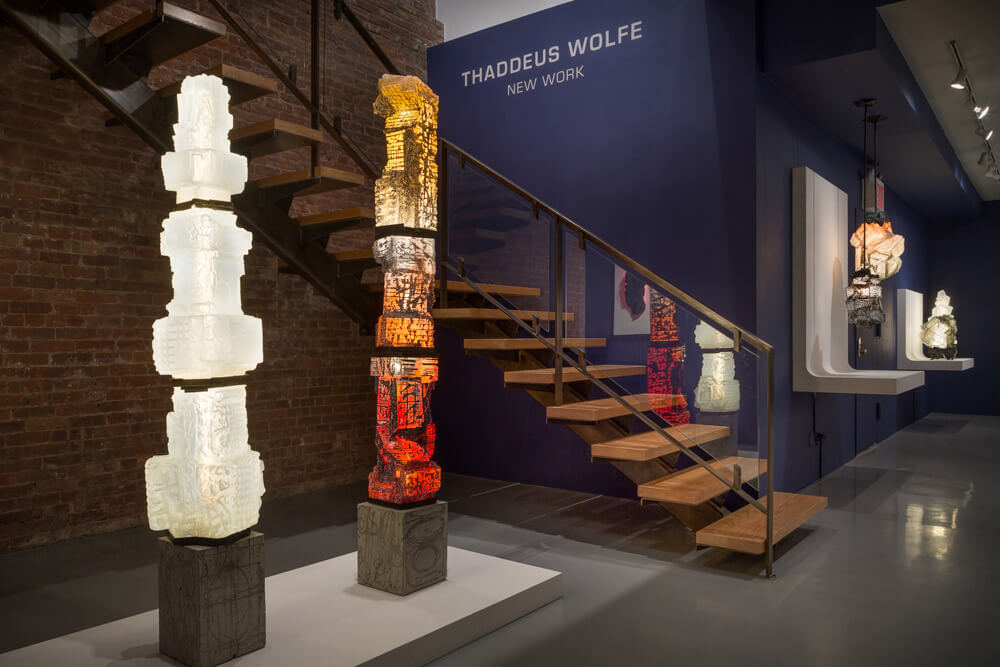
Installation view, ‘Thaddeus Wolfe’, 2015
COURTESY: R & Company
What was a turning point?
Evan: One day we were carrying a sofa into the warehouse and a man came and bought it before it got in the door, so we realised we needed a store.
Zesty: We opened ‘R 20th Century’ in Williamsburg, Brooklyn. Rents were cheap and we both lived and worked there. And suddenly it just took off – we were written up in the New York Times, Wallpaper and other places and people were driving to the store from all over.
Evan: We decided that since most of our clients were from Manhattan, we should move there. We found the Franklin Street space, and had a handshake deal with the landlord because the space wasn’t ready.
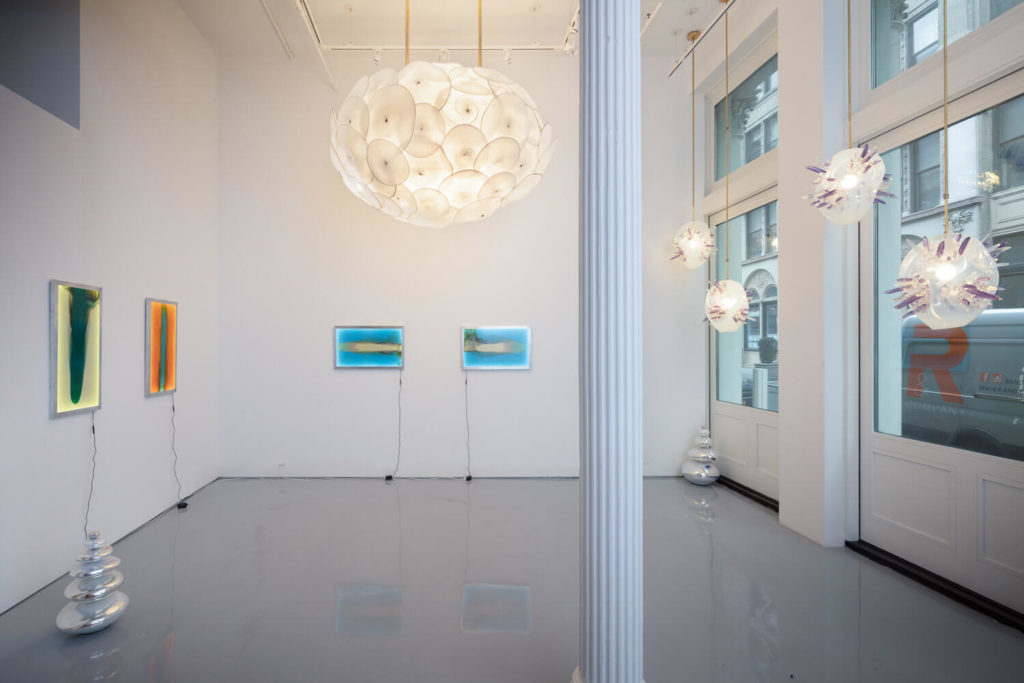
Installation view, ‘New works by Jeff Zimmerman’, 2019
COURTESY: R & Company
Zesty: We heard that some furniture was available from Marcel Breuer’s first project in the US: 100 dormitory rooms installed in 1939 at Bryn Mawr College.
Evan: I called the school and was told that there was going to be a sale that weekend for alumni, but we could come if we wanted. The furniture was spread out on a gymnasium floor, and there were just two alumni there. We bought everything, except the broken stuff.
Zesty: It cost $10,000, which was all the money we had, but the money we made on it was enough to pay for the lease on Franklin Street.
Evan: We raised over $100,000 in a couple of days! It doesn’t often happen like that. And if the landlord had wanted payment in advance we couldn’t have bought the furniture.
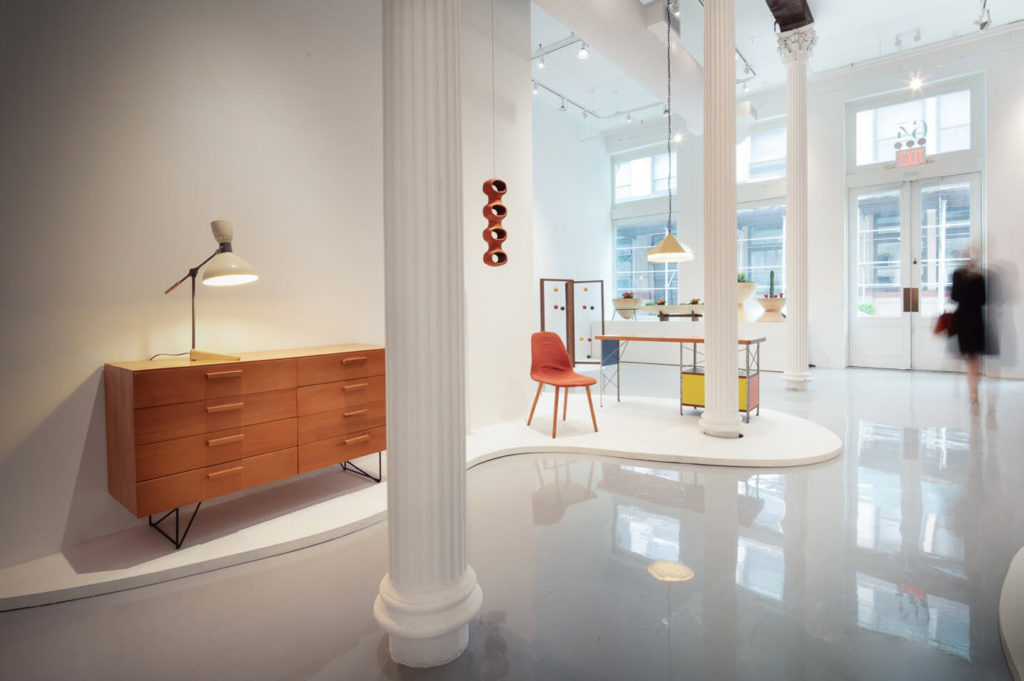
Installation image of ‘20 Year Anniversary’ exhibition, 2019
COURTESY: R & Company
What makes you different from other dealers?
Zesty: I think it’s the way we present design shows like art. The most important thing we took away from going to art school was learning about presentation. Most other dealers were just looking to sell stuff.
Evan: The outward vision of the gallery is critical — it includes curatorial work, exhibition design, photography and marketing campaigns, and book publication. We knew that if we were really serious we’d have to publish books, and we’ve been doing that.
Zesty: We do lots of research. In every new place, we’d ask around, find good design stores to see what they had, and we’d go to antique bookstores and ask for books on design. Often the owner would show us a shelf of books saying “Nobody ever asks for these” and we’d buy them all. That’s how we started to build an archive – so we could learn about what we had and so we could tell our clients why what they were buying was important.
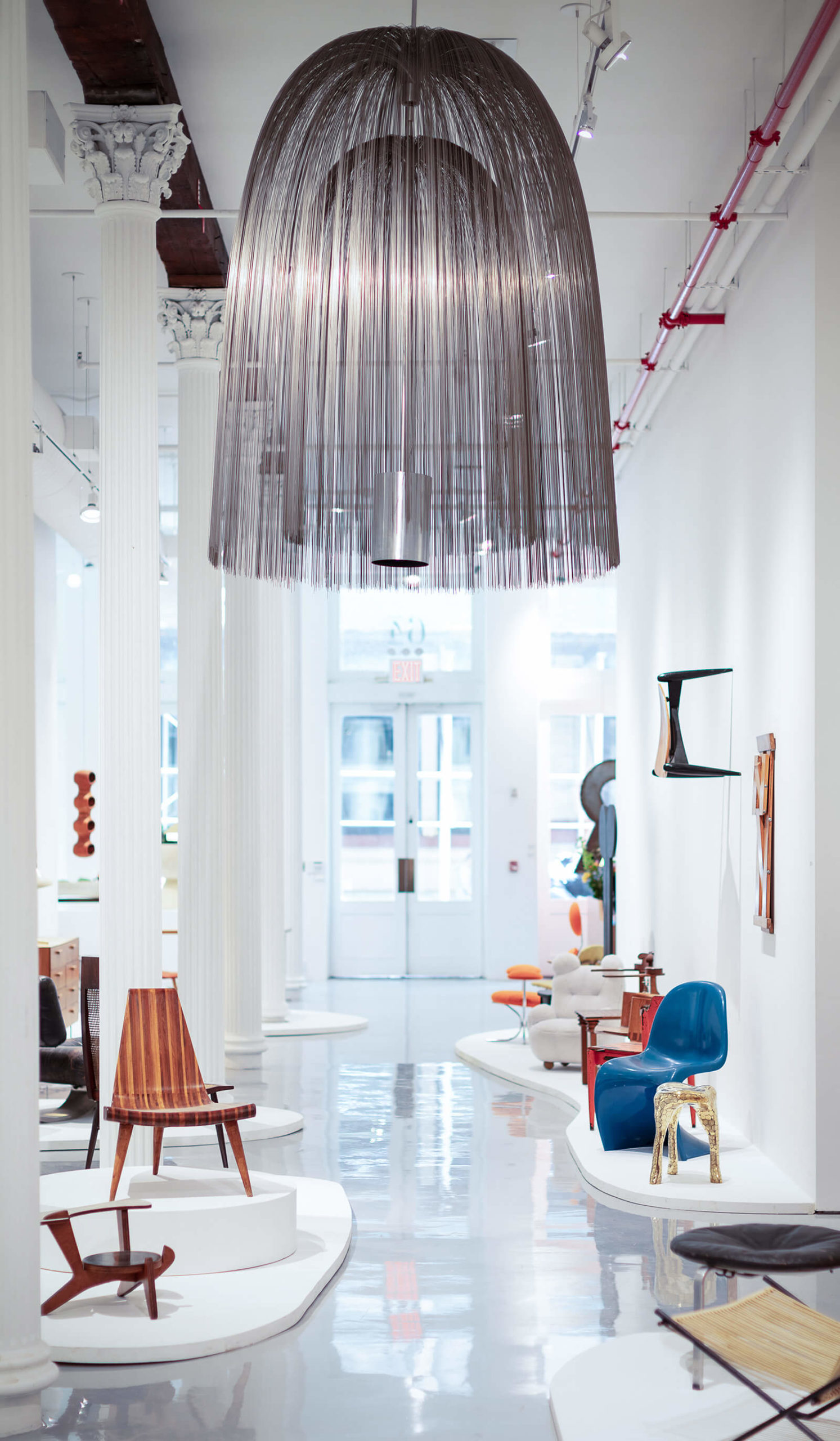
Installation image of ‘20 Year Anniversary’ exhibition, 2019
COURTESY: R & Company
“I think we are different from other dealers as we present design shows as art”
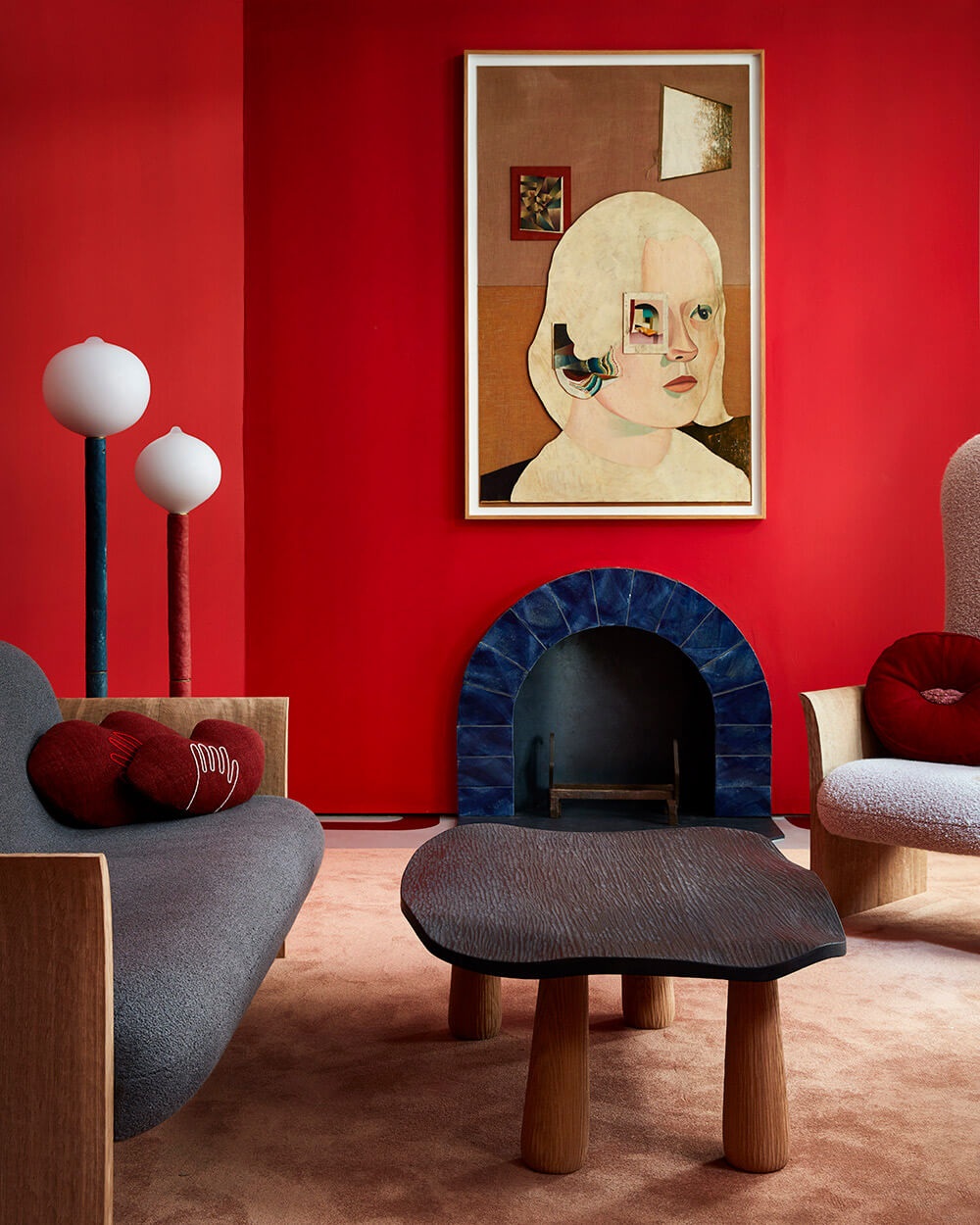
Installation view, ‘Pierre Yovanovitch’, 2019-2020
COURTESY: R & Company
“We want to find the needle in the haystack, designers who push the boundaries”
How do you choose designers to work with?
Zesty: We have no particular criteria, no specific thing.
Evan: It’s not a matter of personal taste, but more about the story behind the work and the artist. There needs to be an aspect of discovery … we want to find the needle in the haystack, designers who push the boundaries, like the Haas Brothers or Katy Stout.
Zesty: It’s a long process, developing the artists, getting enough together for a show.
We also like finding designers who aren’t new but have been overlooked or undervalued, such as Greta Grossman or Tapiovaara. I would add Brazilian design as a whole and Radical Italian design.
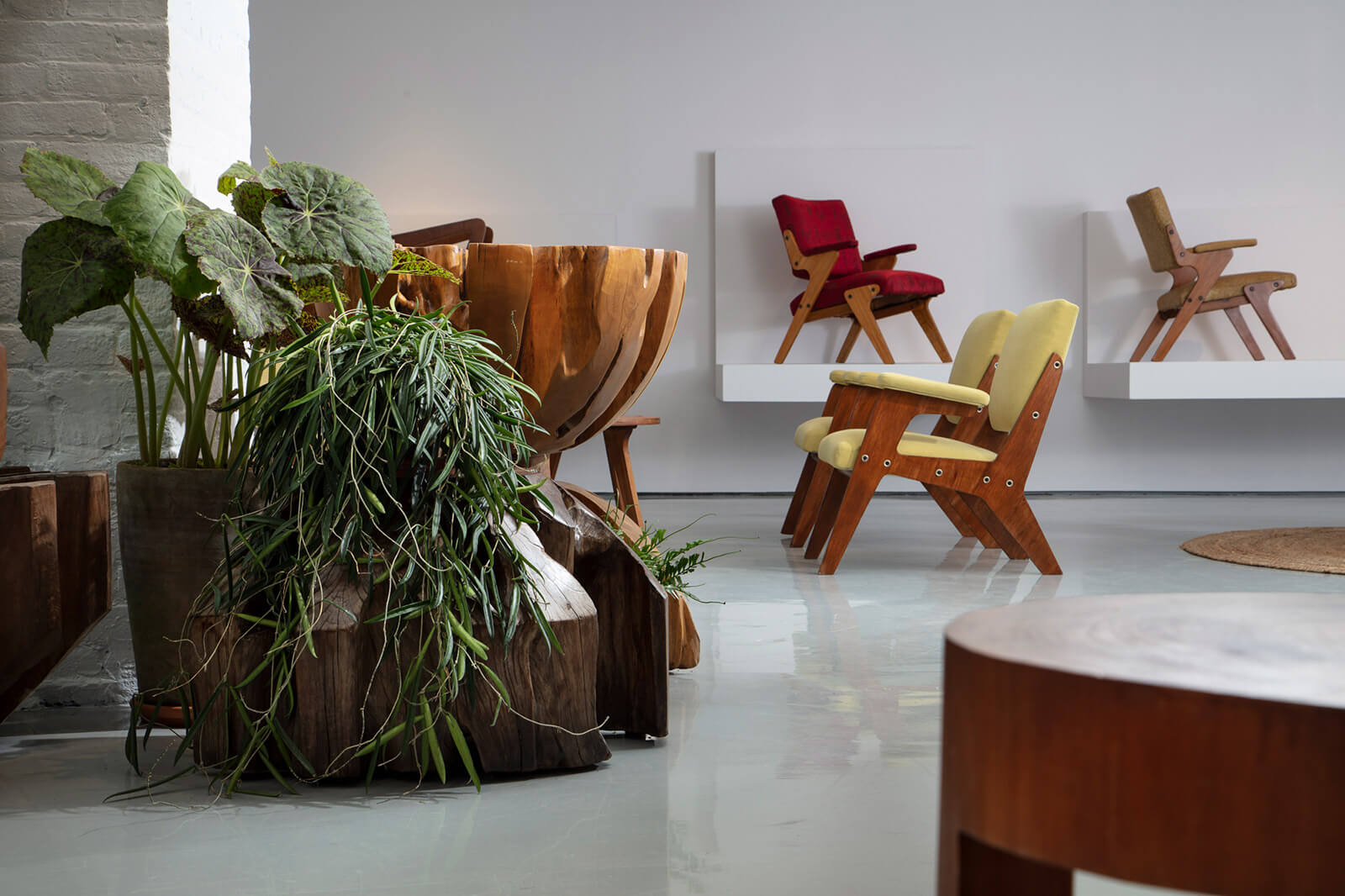
Installation view, ‘Jose Zanine’, 2016
COURTESY: R & Company
What would you like to do that you haven’t done?
Zesty: I want to build a house. It would be a chance to put my knowledge to work. And there are many other things I want to do. The challenge is time … we’re constantly out of time.
Evan: I have some exhibition dreams that I’d like to pull off, but I’m not ready to reveal them. But one thing I’d like to do is build important collections for serious buyers of design. There are so few true experts and tastemakers from the collectible design world.
Zesty: We want to make money, but we also want to make a contribution as New York has been good to us. We could get clients without having a retail store, but it’s our way of giving back. We’ve created a space that people can learn from, showing contemporary design in a historic setting.
Evan: It’s very different now from the early years, but it’s just as exciting.
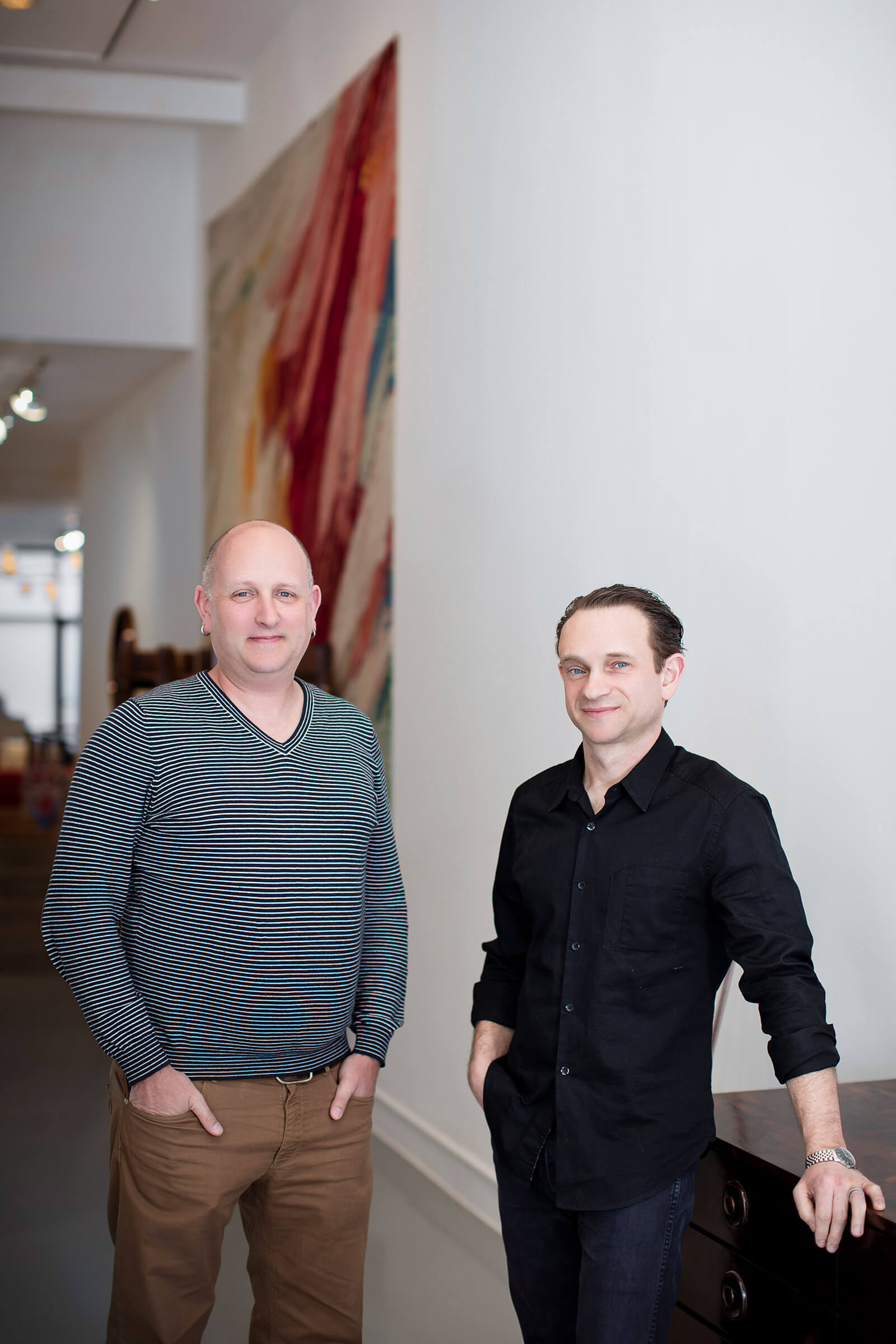
Zesty Meyers and
Evan Snyderman
COURTESY: R & Company / PHOTOGRAPH: Joe Kramm
R & Company – represent a distinguished group of 20th and 21st century designers, whose work is among the most innovative and finely crafted of their time.




